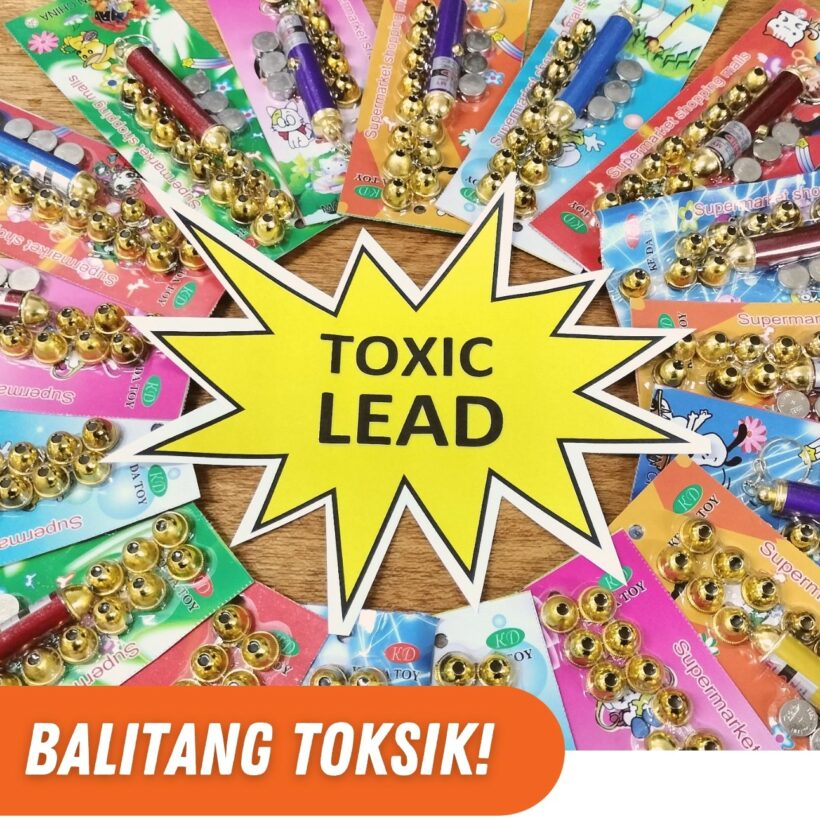While promoting safe toys for kids during this yuletide season, the toxic watchdog group BAN Toxics raised their concern over the sale of unnotified and unlabelled lead-tainted laser pointer toys in the market. In the recent market monitoring conducted over the weekend, the group purchased 18 multi-colored laser pointer toys amounting to 200 pesos per pack in ambulant toy vendors in Divisoria, Manila.
These laser pointer toys come in different colors and are powered by button cell batteries. These toys are used as an educational tool and teaching aid, however, it is usually misused and marketed as a toy, hence the need for a cautionary measure.
Using a SCIAPS X Series HH XRF Analyzer, the group screened each laser pointer toy for toxic chemicals content on the paint coatings and button cell batteries. The results showed that all samples had lead content ranging from 1,500 parts per million (ppm) to 6,156 ppm. Mercury was also detected in the button cell batteries, with mercury levels up to 108 ppm content.
The Department of Environment and Natural Resources (DENR) issued Administrative Order 2013-24 (DAO 2013-24), or the Chemical Control Order for Lead and Lead Compounds that prohibits the use of lead in children's toys, to protect children from being exposed to the toxic chemical lead.
According to the World Health Organization (WHO), lead exposure can have serious consequences on children’s health. At high levels of exposure, lead attacks the brain and central nervous system, causing coma, convulsions and even death. Children who survive severe lead poisoning may be left with intellectual disability and behavioral disorders.
At lower levels of exposure that cause no obvious symptoms, lead is known to produce a spectrum of injury across multiple body systems. In particular, lead can affect children’s brain development, resulting in reduced intelligence quotient (IQ), behavioral changes such as reduced attention span and increased antisocial behavior, and reduced educational attainment.
Lead exposure also causes anemia, hypertension, renal impairment, immunotoxicity and toxicity to the reproductive organs. The neurological and behavioral effects of lead are believed to be irreversible.
Mercury is considered by WHO as one of the top ten chemicals or groups of chemicals of major public health concern. It may have toxic effects on the nervous, digestive and immune systems, and on the lungs, kidneys, skin and eyes.
“We will continue to remind the consumers to take the necessary precaution in buying unnotified and unlabelled toys that may contain toxic chemicals that are dangerous to our kids, said Thony Dizon, Toxics Campaigner of BAN Toxics.
BAN Toxics reminded the toy manufacturers to follow the labeling requirements under Republic Act 10620 or the Toy and Game Safety Labeling law, which are as follows:
1. License-To-Operate Number issued by FDA
2. Age grading
3. Cautionary statements/warnings
4. Instructional literature
5. Manufacturer’s marking
6. Item, Model, SKU number
Violation of the said law will result in imprisonment of not less than (3) months but not more than two (2) years or a fine of not less than ten thousand pesos (P10,000.00) but not more than fifty thousand pesos (P50,000.00), or both imprisonment and fine as the discretion of the court.
“It is our diligent duty and responsibility to protect the health and safety of the children for their
development and their future,” BAN Toxics added.
Resources:
https://www.who.int/news-room/fact-sheets/detail/lead-poisoning-and-health
https://www.who.int/news-room/fact-sheets/detail/mercury-and-health
https://doh.gov.ph/sites/default/files/policies_and_laws/IRR%20RA%2010620.pdf










